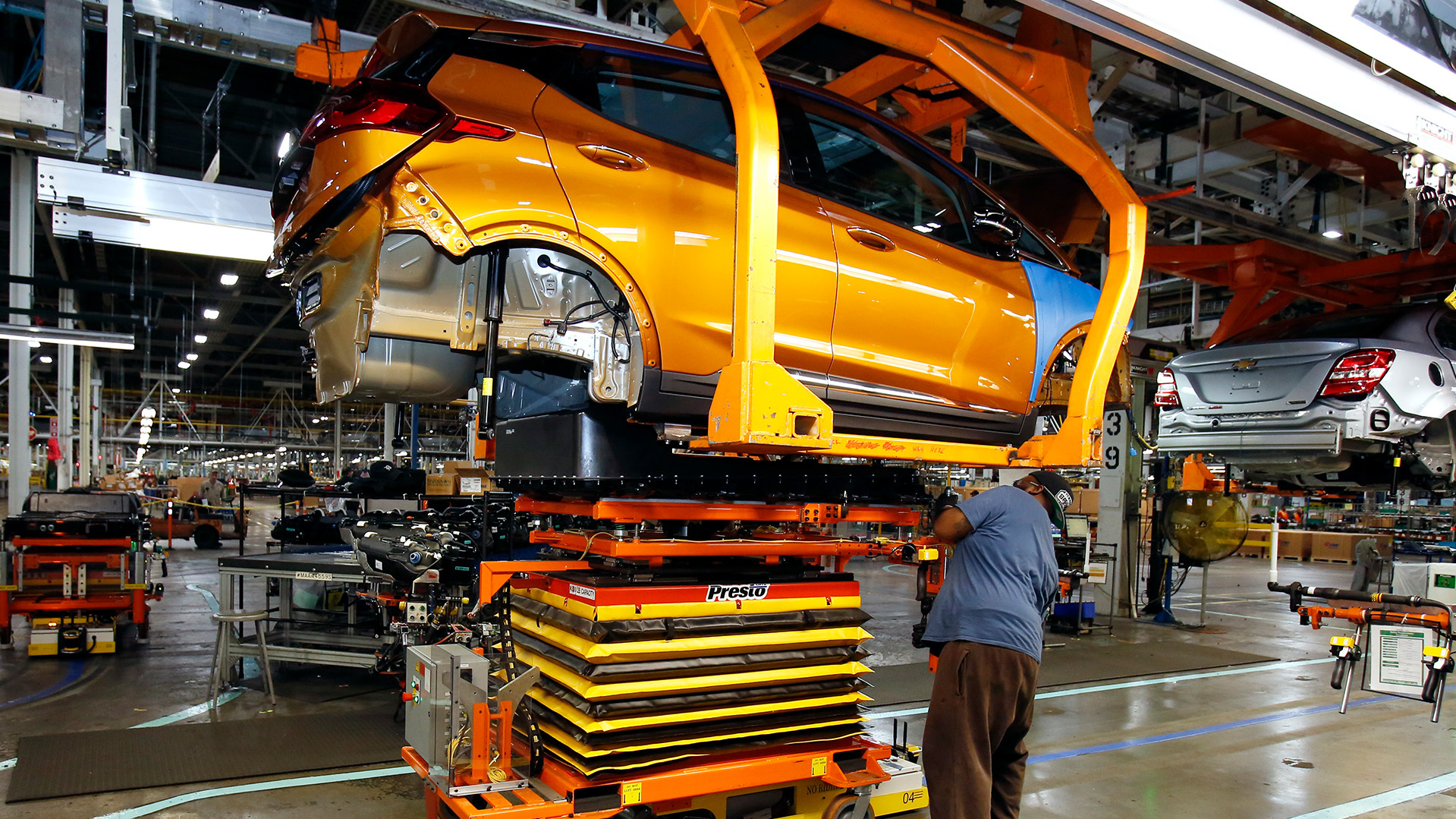
DESPITE INCENTIVES FROM THE GOVERNMENT, THE EV MARKET IS SEEING A COOLDOWN — WHICH IS HAVING REPERCUSSIONS IN THE MANUFACTURING SECTOR.
GENERAL MOTORS ANNOUNCED YESTERDAY IT IS PUSHING BACK THE OPENING OF ITS ELECTRIC PICKUP TRUCK FACTORY OUTSIDE DETROIT BY A YEAR.
THIS COMES AS THE U.S. SAW A MORE THAN TWENTY PERCENT SLOWDOWN IN THE RATE OF EV SALES GROWTH FROM THE FIRST HALF OF THE YEAR, WITH DEALERSHIPS NOW SEEING A BUILDUP OF UNSOLD INVENTORY.
AMERICAN AUTO SELLERS CURRENTLY HAVE MORE THAN NINETY TWO THOUSAND UNSOLD EVS IN STOCK, MORE THAN THREE TIMES THE NUMBER ON THEIR LOTS A YEAR AGO, ACCORDING TO COX DATA.
GM CITED THE EVOLVING EV DEMAND FOR THE DELAY AND SAID IT WILL PLAN TO USE THE ADDITIONAL TIME AHEAD OF THE PLANT’S NEW OPENING DATE IN 2025 TO IMPLEMENT ENGINEERING CHANGES AIMED AT IMPROVING THE PROFITABILITY OF THE TRUCKS ONCE PRODUCTION BEGINS.
OTHER AUTOMAKERS HAVE ALSO REVISED THEIR EV PLANS. TESLA SLASHED PRICES ON SOME OF ITS MODELS BY THOUSANDS AMID CONCERNS OVER SLOWING CONSUMER SPENDING.
FORD, TOO, CUT PRICES IN AN ATTEMPT TO BRING IN NEW BUYERS, WHILE IT DEALS WITH A PROJECTED FOUR POINT FIVE BILLION DOLLAR LOSS ON EVS THIS YEAR. THEIR FORD MODEL E DIVISION HAD ALREADY LOST ABOUT ONE POINT EIGHT BILLION DOLLARS AS OF THIS PAST JULY.
CAR DEALERS AND AUTO EXECUTIVES SAY THESE MOVES ARE A RESULT OF A FLATTENING CURVE ON EV SALES, WHERE THE CONSUMERS WHO ARE WILLING TO PAY A PREMIUM FOR THESE VEHICLES HAVE ALREADY DONE SO, LEAVING THE INDUSTRY TO TRY AND APPEASE A MORE HESITANT MARKET.
THE PUSH TO MAKE EVS MORE AFFORDABLE FOR THESE LESS EAGER PROSPECTIVE BUYERS IS ALREADY UNDERWAY.
OVER THE SUMMER, THE AVERAGE TRANSACTION PRICE FOR A NEW EV WAS DOWN BY NEARLY TWENTY PERCENT YEAR OVER YEAR, AND INCENTIVES TO PURCHASE INCREASED TO ALMOST FOUR THOUSAND DOLLARS.
WHILE EV SALES ARE STILL CONTINUING TO INCREASE OVERALL, INDUSTRY EXPERTS WARN HARD DAYS REMAIN AHEAD.
[ANCHOR]
MORE THAN NINETY NEW EV MODELS ARE EXPECTED TO HIT THE U.S. MARKET THROUGH 2026, ACCORDING TO AUTOFORECAST SOLUTIONS, AND ANALYSTS BELIEVE MANY OF THEM WILL STRUGGLE TO HIT PROFITABILITY.
FOR MORE ON THE EVER CHANGING LANDSCAPE OF EV SALES – HEAD TO SAN DOT COME AND TYPE ELECTRIC VEHICLES IN THE SEARCH TO SEE OUR PAST REPORTS ON THE TOPIC.







